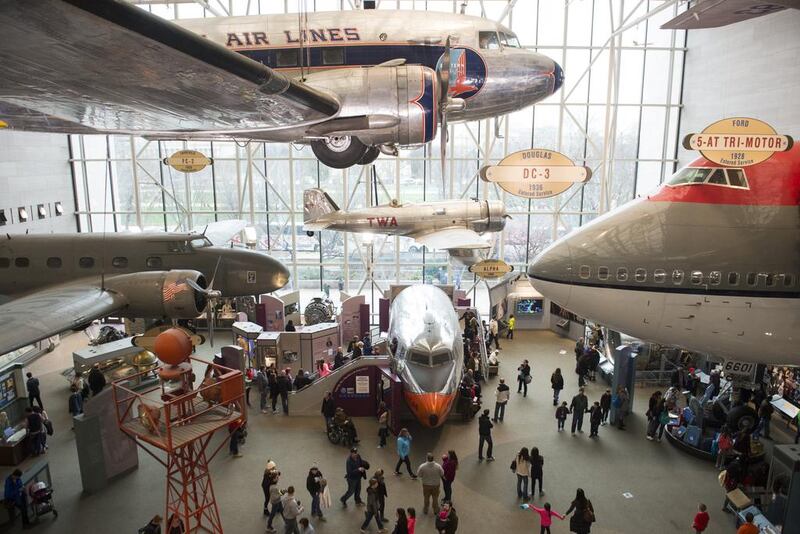Call it the new special relationship. The Smithsonian Institution in Washington and Victoria and Albert Museum in London, have signed an agreement for Smithsonian to organise exhibitions at the 2012 Olympics site in the British capital, where V&A will occupy part of a huge campus.
The memorandum of understanding represents a landmark collaboration between the two major museums, even though Smithsonian’s role has diminished slightly from an initial plan to build its own separate galleries.
“This would not be a ‘Smithsonian outpost in London’,” says Smithsonian’s secretary David Skorton. Yet the accord is the first time that works from the sprawling ensemble of 19 museums will be on view on a permanent basis in galleries outside the United States.
Those galleries will be in the new V&A East, part of a cultural district planned for the Queen Elizabeth Olympic Park in East London, where the 2012 Olympics and Paralympics were held. The total budget for the Olympicopolis project is £850 million (Dh4.6 billion); it is expected to open in 2021 or 2022.
The museums at the Smithsonian – founded in 1846 by an English philanthropist who never visited America – offers V&A a chance to bring everything from aerospace technology and fossils to Hollywood memorabilia to a London audience.
Its collections number “28 to 30 million visits a year”, according to Smithsonian’s spokesperson Linda St Thomas, citing an enviable number for any other museum.
For years, art museums have planned satellite branches, including the Louvre Abu Dhabi and Guggenheim Abu Dhabi, or installed galleries within other museums.
An example is the Guggenheim Hermitage Museum in St Petersburg, which established a successful annex in Amsterdam and abandoned a struggling outpost in a Las Vegas casino. It has announced that it will provide objects from its collections to a US$43m five-storey structure in Barcelona projected to open in 2019 in that city’s port area.
Its partners, Spanish and Russian private investors, anticipate a half-million visitors annually. The Hermitage is also building galleries in Moscow. As far back as 1999, the Museum of Fine Arts Boston established galleries in Nagoya, Japan, where art-hungry locals queued to see impressionist paintings.
The Smithsonian, whose mandate extends beyond fine art, comes late to the growing trend of broad international exchanges of objects and talent, even though its global scholarly exchanges have been in place for decades.
The V&A initiated discussions in 2015, says St Thomas. No other museum ever approached Smithsonian before about collaborating on this scale. The two museums began discussions in 2015 at V&A’s request, says St Thomas. No other museum ever approached the Smithsonian before about collaborating on this scale.
“The V&A will lease the space, and take care of the annual operating costs,” she says, outlining the division of labour involved, “and the Smithsonian will do private fund-raising for exhibitions, programmes and whatever we do, collaboratively with the V&A or on our own”.
In the US, the Smithsonian gets most of its budget from the US Congress. Admission to its galleries – except at the Cooper Hewitt Design Museum in New York – is free.
St Thomas could not confirm whether that would be the case in London in its galleries at the V&A, although it seems unlikely, given the constant mention of the site’s role in economic development.
Free or not, a major portion of the galleries’ visitors could turn out to be American tourists, a mainstay of the London cultural economy and the same public for the Smithsonian museums in Washington.
The potential partnership makes sense for V&A, said Larry Warsh, founder of the now-defunct American magazine Museums, and an adviser to museums on international collaborations. “It’s huge,” he said. “The Smithsonian is an amazing vault – a conceptual vault and a real vault of millions of objects – which enables any collaborating institution to assemble exhibitions for the next 20 years.”
The deal isn’t simply a conduit to send inventory from Washington to London, says St Thomas. The parties “are not sure how artefact-rich it will be”, she says, “maybe it will involve innovation and technology”.
The Smithsonian’s programmes in history and popular culture is known for attracting a broad public from outside existing audiences for art museums – practising outreach or going down-market, depending how you look at it.
Yet words of caution came from Gary Tinterow, director of the Museum of Fine Arts Houston, and a former curator at the Metropolitan Museum of Art. “As museum collections grow, administrators naturally seek new venues and audiences for the objects in their care,” says Tinterow.
“But the cost of maintaining facilities, transporting and mounting exhibitions continues to grow at a rate that exceeds the revenue potential of most venues, so new outlets come with new fund-raising obligations. Absent government subsidies or guaranteed funders, satellite museums have had a difficult time finding sustainable business plans.”
Asked if the object-rich Smithsonian had been approached by other institutions outside the US once the London deal was announced, St Thomas says, “not yet”.
artslife@thenational.ae





